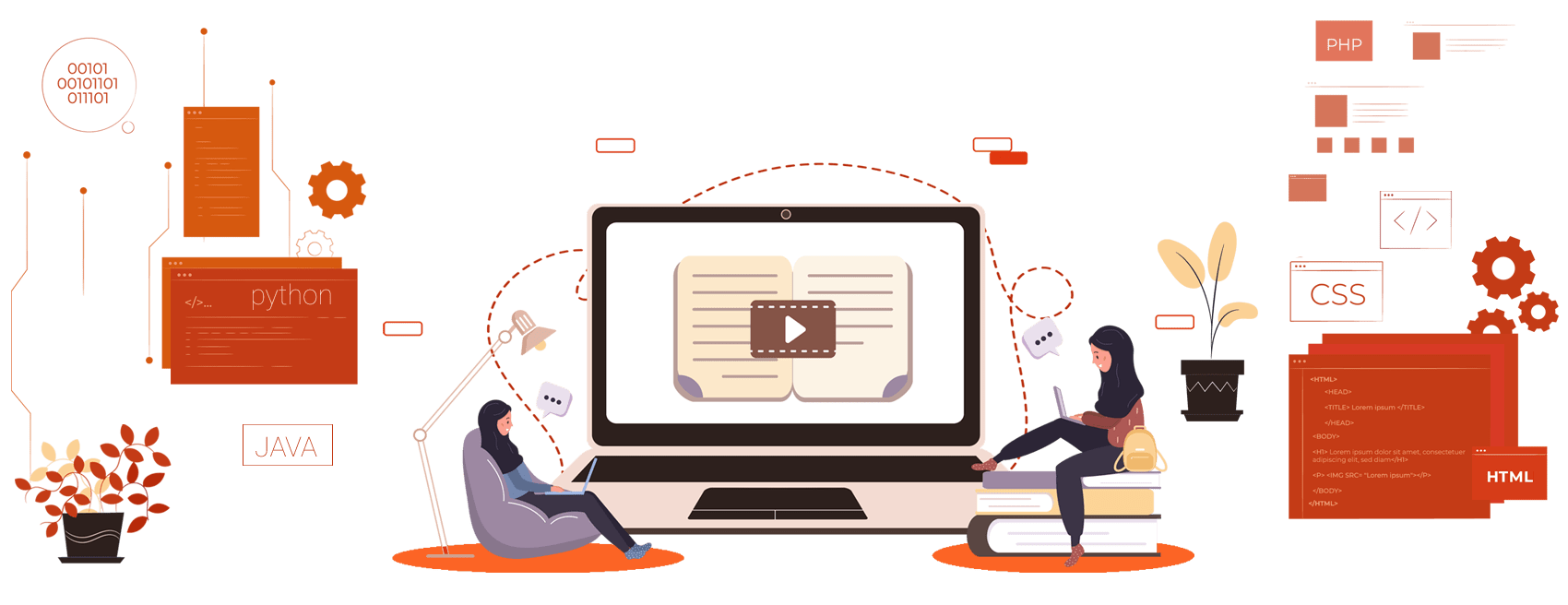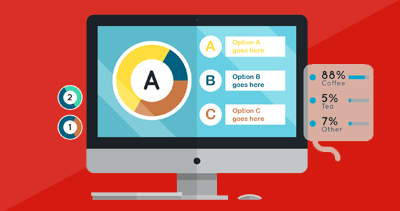
THIS CERTIFICATION IS AUTHENTIC AND ACCEPTED BY EMPLOYERS. HOW ? Read more
What You get
with this Course
Distributed Systems I Cloud Computing with Java Course I Certification

WHY IS THIS VIDEO TRAINING ONLINE CERTIFICATION HIGH IN DEMAND?
What will you get out of this course?
You will study distributed algorithms, distributed information storage, and distributed computing architectures in this distributed systems course.
Distributed communication protocols, distributed synchronization, distributed system security, high availability, scaling, and optimization will all be covered.
You would also learn about large-scale distributed system design and implementation.
What exactly is Java?
Sun Microsystems created Java in 1995 as a class-based, object-oriented computer language. It is intended to have the fewest implementation dependencies feasible, allowing developers to build code that will operate on any Java-enabled device, independently of architecture or platform. Java is utilized in a wide range of applications, including online and enterprise applications, mobile apps, desktop apps, games, and more. It is also used to construct apps that are cross-platform interoperable, such as Windows, Mac OS, Linux, and many others.
What are the benefits of Java?
Simplicity: Java is designed to be easy to use, write, compile, debug, and learn than other programming languages.
Object-Oriented: Java is based on the Object-Oriented programming concept which allows us to create modular programs and reusable code.
Secure: Java is one of the most secure programming languages.
It has a built-in security feature which makes it suitable for developing secure applications.
Robust: Java provides an automatic memory management system that helps to avoid memory leaks and makes the program robust.
What is cloud computing?
Cloud computing refers to the use of computer resources (hardware and software) that are hosted on the Internet and allows users to access apps and information from any device. Businesses can employ their own private virtual networks and view their information from anywhere, at any time, with this sort of computing.
Cloud computing enables businesses to decrease IT costs and boost scalability without having to invest in extra hardware. Businesses can use cloud services to dynamically assign resources based on user needs and pay only for what they use. This allows organizations to concentrate on their core strengths as well as still have access to the computing resources they require.
What are distributed systems?
Distributed systems are linked computer systems that coordinate their actions by sharing resources and information. These technologies can span numerous physical places and interact with one another via a network. Distributed systems are utilized for a variety of purposes, ranging from database systems to high-performance computing.
There are two types of distributed systems: peer-to-peer and client-server. Each node in a peer-to-peer network is fair and can both offer and consume resources. One or more nodes in a client-server system are labeled as clients, while the rest as servers. Clients ask the server for services, that it offers. Distributed systems provide enhanced dependability, scalability, and performance.
Why is cloud computing advantageous?
The distribution of computing services such as servers, databases, applications, analytics, and storage via the internet is known as cloud computing. It allows businesses to leverage the same sophisticated technology that digital titans like Google and Amazon use at a fraction of the expense. Versatility, cost-effectiveness, and flexibility are the key advantages of cloud computing. Businesses may quickly and effectively scale their computing resources to match their needs with cloud computing. This makes it suitable for businesses of all sizes, from startups to major corporations.
Cloud computing is indeed inexpensive. Businesses could save money on hardware, software, and storage by employing cloud computing services. It also reduces the requirement for expensive dedicated IT personnel.
Cloud computing also provides enterprises with agility and flexibility. Businesses have access to their computing resources at any time and from any location. This allows resources to be easily transferred to various organizations or regions as needed. Cloud computing can also boost teamwork.
What is the compensation and benefits package for a distributed system expert?
A distributed system expert's compensation will vary depending on the individual's experience, region, and job requirements. A distributed systems specialist can expect to earn an annual salary of roughly $80,000 on average.
However, based on the individual's expertise and job requirements, earnings can range from $50,000 to $140,000. A distributed systems specialist with experience creating and implementing distributed architectures may earn better compensation. This employee can expect to earn roughly $100,000 per year on average.
A distributed system expert with a high level of experience who is capable of managing complicated architectural and system design jobs can earn up to $150,000 per year at the top end of the spectrum. Many distributed systems experts are entitled to supplementary benefits like health insurance, retirement funds, and bonuses in addition to their base income.
Course Syllabus
| Getting Started | 11 lectures | 17 mins |
| HTML and foundation | 11 lectures | 17 mins |
| Some title goes here | Preview | 01:42 |
| Welcome guide document | 10 Pages | |
| Some title goes here | 07:42 | |
| 2 Some title goes here | 07:42 | |
| Hello Some title goes here | 07:42 | |
| This is Some title goes here | 07:42 |
| CSS and foundation | 17 lectures | 87 mins |
| Some title goes here | Preview | 01:42 |
| Welcome guide document | 10 Pages | |
| Some title goes here | 07:42 | |
| 2 Some title goes here | 07:42 | |
| Hello Some title goes here | 07:42 | |
| This is Some title goes here | 07:42 |
| Making Responsive Website | 17 lectures | 87 mins |
| Some title goes here | Preview | 01:42 |
| Welcome guide document | 10 Pages | |
| Some title goes here | 07:42 | |
| 2 Some title goes here | 07:42 | |
| Hello Some title goes here | 07:42 | |
| This is Some title goes here | 07:42 |
| Learn Sass less Scss | 17 lectures | 87 mins |
| Some title goes here | Preview | 01:42 |
| Welcome guide document | 10 Pages | |
| Some title goes here | 07:42 | |
| 2 Some title goes here | 07:42 | |
| Hello Some title goes here | 07:42 | |
| This is Some title goes here | 07:42 |
| Learn about Cpanel and file uploads | 17 lectures | 87 mins |
| Some title goes here | Preview | 01:42 |
| Welcome guide document | 10 Pages | |
| Some title goes here | 07:42 | |
| 2 Some title goes here | 07:42 | |
| Hello Some title goes here | 07:42 | |
| This is Some title goes here | 07:42 |
Do you want this course
to learn
LIVE
?
Enroll in this course now and avail all the benefits.

Learn from industry
Experts
LIVE
?
Learn One-to-One Live Course - Coming Soon.



Brainmeasures Certifications are acknowledged globally because the tests are conducted under the strict vigilance of trained proctors and are recorded which makes Brainmeausres testing system the most authentic testing platform.
Enroll NowOur Hiring Partners
Brainmeasures certified Professionals work with global leaders.

Corporate Training
If you want to give the Trending technology experience to your esteemed employees, we are here to help you!
CONTACT CORPORATE CO-ORDINATOR
What makes Distributed Systems I Cloud Computing with Java Course I Certificationunique?
VIDEO ONLINE COURSE
The video online course is well-structured and comprehensive.
EASY TO UNDERSTAND
The topics are organized in proper sequence to enable the candidate understand them easily.
SELF-EXPLANATORY
Easy to understand and implement in real life.
MORE ATTRACTIVE
Sufficient pictures, tables, graphs have been provided to make this online Course more attractive to the readers.
PROCTOR SURVELIANCE
Final certification exam conducted under surveillance of trained human proctor.
HARD COPY SHIPPED
We will ship your hard copy anywhere you ask for.
-

- We will ship your hard copy anywhere you ask for.
- SAMPLE HARDCOPY CETIFICATE
-

- Immediately after taking the test you can check your scores with detailed.
- Immediately download soft copy certificate.
- VIEW ANALYSIS REPORT
-

- ENROLL FOR Distributed Systems I Cloud Computing with Java Course I Certification - VIDEO COURSE AND CERTIFICATION PROGRAM
- REGISTER NOW
-

- Online Video course by Highly qualified Trainers.
-

- If you have any query our trainers are accessible easily.
- Send your questions and get answers within 7 working days.
-

- Final exam is proctored – you will be monitored throughout, this is done using our high-end Proctor software, so that you need not go to any special location but take it from your own PC.
- This testing format matches world-class testing standards.
- Certificate will mention wording proctored to prove the authenticity of your knowledge.
-

- You can take any number of retakes if you are not satisfied with your score or failed to pass.
- Test re-takes are paid, each retake is worth $ 50.
-

- Earn high.
- Brainmeasures certificates are honoured by employees worldwide.
- Get desired position in your organization.
TAKE A FREE TEST
Distributed Systems I Cloud Computing with Java Course I Certification
Take free practice test now
Reviews ( click here to Read all )
Why choose Us
In today’s corporate world, a single wrong decision can cost you millions; so you cannot afford to ignore any indemnities you may incur from a single wrong hiring decision. Hiring mistakes include the cost of termination, replacement, time and productivity loss while new employees settle into their new job.
Our Mission
Our Mission is simply to help you attain Course Name knowledge which is at par with best, we want to help you understand Course Name tools so that you can use them when you have to carry a Course Name project and make Course Name simple and learnable.



























